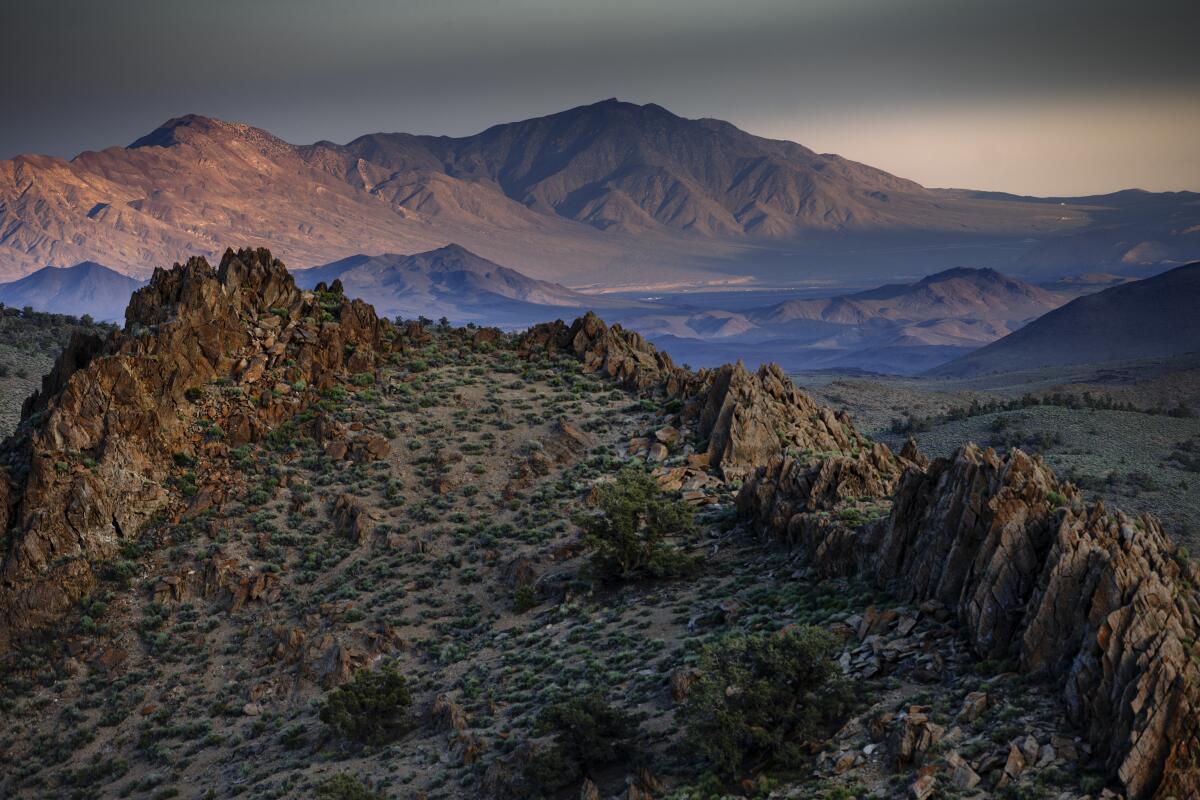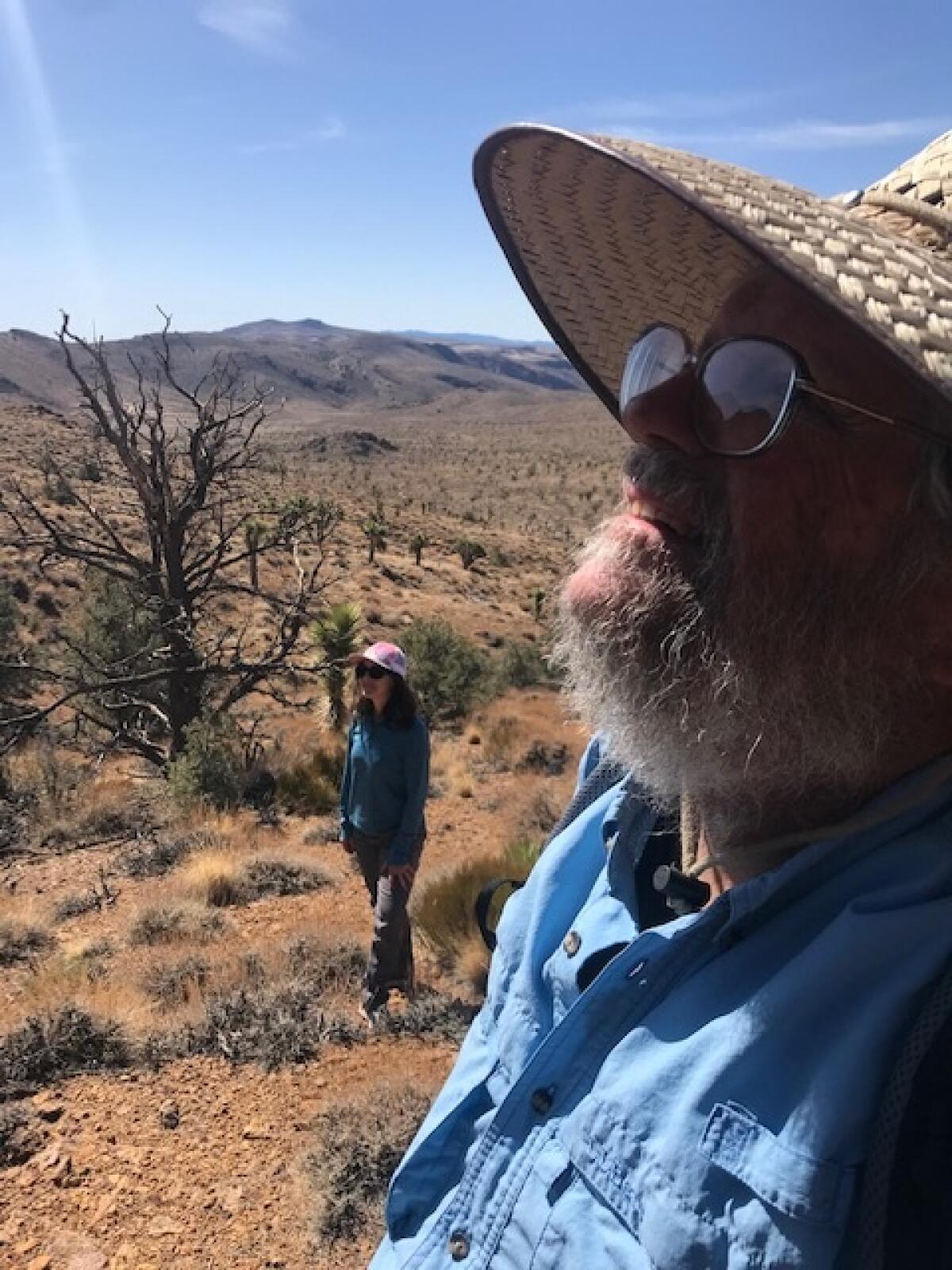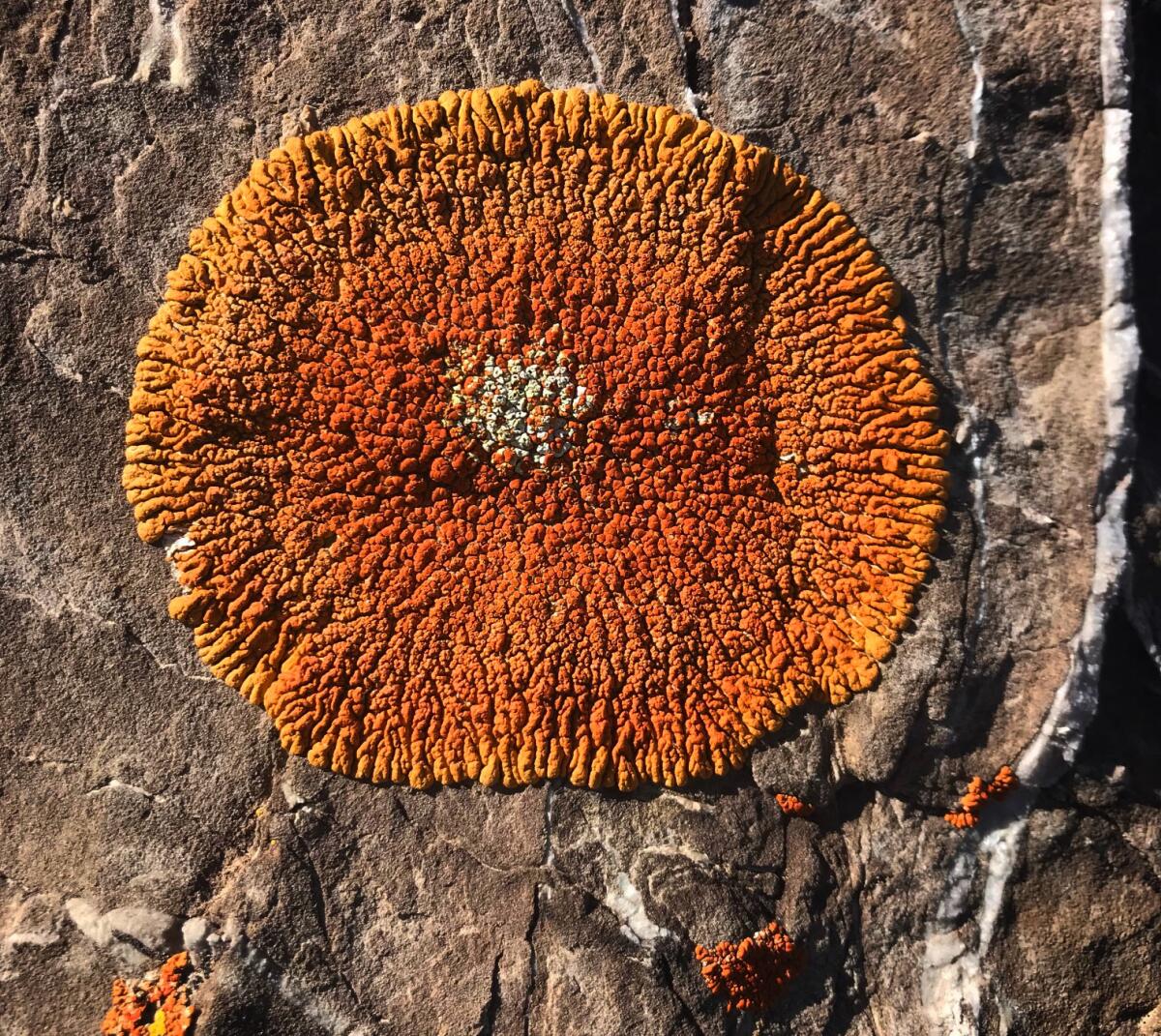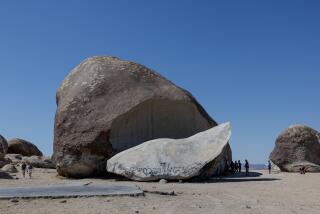Conservationists are a step closer to keeping a ‘desert island in the sky’ wild forever

LONE PINE, Calif. — Wendy Schneider stood on the edge of a windy cliff in an untamed plateau near Death Valley National Park, inhaled deeply and admired a vista of spiny plants, rock spires and sweeping plains that has changed little in thousands of years.
Billowing white clouds drifted off burnt-brown hills bristling with branched and twisted Joshua trees and fishhook cactus. The loudest sounds were the rattling calls of red-shafted flickers flitting in pinion pines.
About a five-hour drive from Los Angeles, the nearly roadless desert island in the sky known as Conglomerate Mesa should prove irresistible, she said, to adventurous souls seeking panoramic scenery and solitude in what remains part of the ancestral homeland of the contemporary Timbisha Shoshone Tribe and the Lone Pine Paiute Shoshone Tribe.
But Schneider, executive director of the nonprofit Friends of the Inyo, and other conservationists who came together on the mesa on a recent morning were in no mood to compromise in their opposition to mining companies seeking to make a fortune in gold off the heavily mineralized terrain.
“Absolutely not — we’ll fight every mining proposal that comes through here with every means available,” she said. “The local conservation community has fought off 11 mining companies, and now we’re shifting our efforts to establishing permanent protections for the mesa.”
“We’re considering many options,” she said, “including having the mesa designated a national monument before the next national election in 2024.”

That kind of talk was buoyed by a recent victory for the environmental community in the struggling Owens Valley towns straddling U.S. Highway 395 between the eastern Sierra Nevada range and Death Valley.
At issue is the future of 22,500 acres of rugged public lands that despite scant rainfall, a dearth of natural springs and elevations that range between 3,800 to 7,100 feet, is home to bighorn sheep, mountain lions, bobcats, deer, desert night lizards and Townsend’s long-eared bats.
It is also where the rare Inyo rock daisy clings to existence in crevices and cliff walls. A month ago, the Center for Biological Diversity, in conjunction with the California Native Plant Society, submitted petitions with state and federal wildlife agencies seeking to have the Inyo rock daisy listed as a threatened or endangered species.
Underground, however, the mesa and desert terrain surrounding it harbor other natural treasures that pose a threat to the food webs on the surface yet could help meet the 21st century needs of America: boron, gold, platinum, rare earth metals used in high-technology electronics, and lithium, an essential component of electric vehicles.
Most recently, K2 Gold Corp., of Vancouver, Canada, made large investments in its so-called “Mojave project” on the mesa that included attempting to build lasting relationships in the nearby town of Lone Pine by opening an office next door to the local chamber of commerce.

In full swing, the company liked to say, the project had the potential to inject over a billion dollars into the local and state economy and create hundreds of jobs.
So it came as a stunning surprise two weeks ago when K2 abruptly announced it was suspending its exploratory drilling activities on the mesa due to a request from the U.S. Bureau of Land Management for a full environmental impact statement. The company described the request as “absurd” and the result of “political interference at the highest levels.”
“An EIS is a regulatory hurdle usually reserved for mine construction,” said John Robins, K2’s executive director. The development was “a sad indictment as to the future of mineral exploration and possibly mining in the U.S., particularly within the state of California,” he said.
K2 Corp., he added, was moving its investments to gold fields about 40 miles to the east in Nevada.
The company’s departure couldn’t happen soon enough for conservationists who found it hard to come to terms with mining proposals that would have produced about 2 grams of gold per ton of processed ore.
But Pete Dronkers, an expert on the environmental impacts of large-scale mining, suggests that “it is not time to relax” because the company still controls hundreds of claims it acquired on the mesa since 2019.
“Instead, it is time to double down on efforts to get permanent protections for Conglomerate Mesa,” he said. “With the price of gold climbing higher, miners will always come looking for it.”
What is heavy on the minds of nonprofit environmental groups led by Friends of the Inyo, the Sierra Club, the Audubon Society and local Paiute tribes has been how to accomplish that without stirring too much controversy.
Chris Clarke, associate director of the National Parks Conservation Assn.’s California program, suggested that “attaching Conglomerate Mesa to Death Valley National Park would be an obvious way to protect that big, wild place.”
After all, President Hoover in 1933 issued a proclamation establishing the Death Valley territory as a national monument. The document included these words: “Warning is hereby expressly given to all unauthorized persons not to appropriate, injure, destroy or remove any feature of this monument and not to locate or settle upon any of the lands thereof.”
Michael Prather, a botanist and longtime Sierra Club activist in Lone Pine, is among Owens Valley environmental leaders who endorse strategies including seeking support and approval from Interior Secretary Deb Haaland, Sen. Dianne Feinstein (D-Calif.) and the Biden administration for a national monument designation, perhaps by executive action.
As envisioned by conservationists, such a designation would impose new rules and regulations that could eventually, as one mining opponent put it, “make it economically infeasible to pursue mining activities on the mesa.”
But the window of opportunity for such a proposal may be closing fast. “If Republicans take control of the House in November,” Prather said, “things will get tough for us.”
Tramping recently along a stretch of trail that climbs, dips and winds through desert back country largely unknown to the public and essentially unchanged since it served as a trade route for Native Americans, Prather pointed to evidence that the mesa only appears to be free of human presence.
Century-old trash, dirt roads torn into the ground by heavy machinery and trucks, and stumps of trees felled for lumber and charcoal for smelters that processed precious metal ores are reminders that the rugged and remote landscape remains at risk.
Conglomerate Mesa’s charcoal smelters helped give birth 150 years ago to the silver town of Cerro Gordo, where ingots were produced and shipped off to the small pueblo of Los Angeles by steamboat and 20-mule team.
“We’re all about protecting special places for future generations — and Conglomerate Mesa is one of them,” Schneider said, gazing out across a spectacular landscape scarred by miners prospecting for gold. “There will never be a full-blown gold mine here.”







